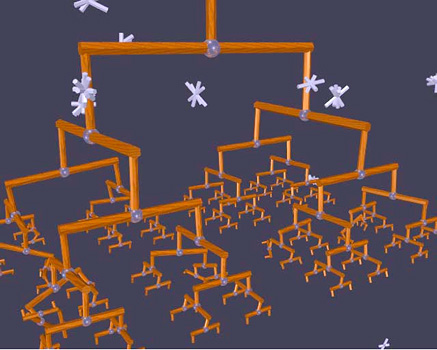Linear-Time Dynamics using Lagrange Multipliers
| David Baraff |
Proceedings of SIGGRAPH 96 (1996)

Current linear-time simulation methods for articulated figures are based exclusively on reduced-coordinate formulations. This paper describes a general, non-iterative linear-time simulation method based instead on Lagrange multipliers. Lagrange multiplier methods are important for computer graphics applications because they bypass the difficult (and often intractable) problem of parameterizing a system's degrees of freedom. Given a loop-free set of n equality constraints acting between pairs of bodies, the method takes O(n) time to compute the system's dynamics. The method does not rely on matrix bandwidth, so no assumptions about the constraints' topology are needed. Bodies need not be rigid, constraints can be of various dimensions, and unlike reduced-coordinate approaches, nonholonomic (for example, velocity-dependent) constraints are allowed. An additional set of k one-dimensional constraints which induce loops and/or handle inequalities can be accommodated with cost O(kn). This makes it practical to simulate complicated, closed-loop articulated figures with joint-limits and contact at interactive rates. A complete description of a sample implementation is provided in pseudocode.
David Baraff (1996). Linear-Time Dynamics using Lagrange Multipliers. Proceedings of SIGGRAPH 96, 137--146.
@inproceedings{Baraff:1996:DB,
title = "Linear-Time Dynamics using Lagrange Multipliers",
author = "David Baraff",
booktitle = "Proceedings of SIGGRAPH 96",
series = "Computer Graphics Proceedings, Annual Conference Series",
month = aug,
year = 1996,
pages = "137--146",
}

